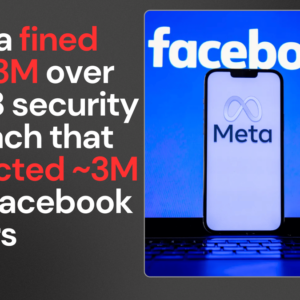Ever Wonder How Bitcoin Mining Farms Make $83K Every Hour? Here’s How
Did you know that large Bitcoin mining operations can generate up to $83,000 in revenue every single hour? It’s a staggering figure that has attracted entrepreneurs, investors, and tech enthusiasts to the cryptocurrency gold rush. But how exactly do these massive operations achieve such incredible hourly earnings? Let’s demystify the world of Bitcoin mining farms and understand the mechanics behind their profitability.
The Bitcoin Mining Ecosystem: Understanding the Basics
At its core, Bitcoin mining is the process of validating transactions on the blockchain network and being rewarded with new Bitcoin. Think of miners as the accountants of the cryptocurrency world – they verify transactions, package them into blocks, and add them to the blockchain. This process requires solving complex mathematical puzzles that demand enormous computational power, which is why large-scale mining farms have become the norm rather than individual miners.
How Mining Farms Generate $83K Hourly Revenue
The primary source of revenue for Bitcoin mining farms comes from block rewards and transaction fees. As of 2025, miners receive 3.125 BTC for each block they successfully add to the blockchain. With Bitcoin trading above $100,000 following the 2024 halving event, a single block reward can be worth over $312,500. Since a new block is created approximately every 10 minutes, large mining farms with significant hash power can expect to win multiple blocks daily.
The $83,000 hourly figure comes from mining farms that control substantial portions of the network’s hash rate. For instance, a farm controlling 5% of the total hash rate could theoretically win 7.2 blocks per day (5% of 144 daily blocks). This translates to approximately $93,750 per hour before accounting for operational costs. The actual revenue fluctuates based on Bitcoin’s price, the farm’s hash rate percentage, and network difficulty adjustments.

Essential Equipment: The Hardware Behind Mining Success
The backbone of any profitable Bitcoin mining farm is cutting-edge hardware. Modern operations rely almost exclusively on Application-Specific Integrated Circuits (ASICs) – specialized machines designed solely for mining cryptocurrency. Top-tier ASIC miners like the Bitmain Antminer S21 Pro or MicroBT Whatsminer M50S can deliver hash rates exceeding 200 TH/s (terahashes per second), making them vastly more efficient than earlier mining equipment.
A professional mining farm typically houses thousands of these units, arranged in carefully designed racks with sophisticated cooling systems. Supporting infrastructure includes industrial-grade power distribution units, network equipment for connecting to mining pools, and redundant internet connections to minimize downtime. The initial investment for a large-scale farm can easily reach tens of millions of dollars, representing a significant barrier to entry.
Key Profitability Factors for Bitcoin Mining Farms
Several critical factors determine whether a mining farm can achieve those impressive $83K hourly revenues:
- Electricity costs: Power typically represents 70-80% of operational expenses. Farms located in regions with electricity costs below $0.05 per kWh have a significant competitive advantage.
- Hardware efficiency: The latest ASIC miners offer dramatically better performance per watt compared to older generations, dramatically affecting profitability.
- Scale economies: Larger operations can negotiate better electricity rates, reduce staffing costs per unit, and optimize cooling solutions more efficiently.
- Bitcoin price: As mining rewards are paid in Bitcoin, the cryptocurrency’s market value directly impacts revenue.
- Network difficulty: As more mining power joins the network, the difficulty of solving blocks increases, potentially reducing individual farm earnings.
The most successful mining operations excel at optimizing these factors. For instance, many have relocated to cooler climates like Iceland or Canada to reduce cooling costs, while others have established facilities near renewable energy sources like hydroelectric dams to secure cheaper electricity rates.
Environmental and Economic Impact of Mining Farms
Bitcoin mining’s environmental footprint has been a contentious topic. The Cambridge Bitcoin Electricity Consumption Index estimated that in early 2025, global Bitcoin mining consumed approximately 120 TWh annually – comparable to the electricity usage of countries like the Netherlands. However, the industry has been rapidly transitioning toward renewable energy, with estimates suggesting over 58% of Bitcoin mining now uses sustainable power sources.
Economically, mining farms create specialized tech jobs and can bring revenue to remote areas with abundant renewable energy. In regions like Texas, Washington state, and parts of Scandinavia, Bitcoin mining has become an important economic driver, particularly in areas with excess power generation capacity. Mining operations can also serve as flexible load resources for power grids, consuming excess energy during low-demand periods and shutting down during peak consumption.

The Future of Bitcoin Mining Profitability
With Bitcoin’s predetermined halving schedule (where mining rewards are cut in half approximately every four years), mining farms must continuously innovate to maintain profitability. The most forward-thinking operations are exploring heat recovery systems to utilize the waste heat from mining, negotiating dynamic electricity pricing agreements, and developing proprietary technology to gain efficiency advantages.
Industry consolidation is also accelerating, with the largest players acquiring smaller operations during market downturns. This trend suggests that while the $83K hourly revenue figures may continue for the largest and most efficient operations, the barriers to entry for newcomers will likely increase further.
Is Bitcoin Mining Worth It in 2025?
For individual enthusiasts, small-scale Bitcoin mining has become increasingly challenging. However, for well-capitalized enterprises with access to cheap electricity and the latest hardware, mining remains highly profitable despite the 2024 halving. The key to sustainable success lies in treating mining as a sophisticated industrial operation rather than a speculative venture.
The most resilient mining operations view their business through a long-term lens, building infrastructure designed to last through multiple Bitcoin market cycles. They understand that while $83K hourly revenues capture headlines, consistent operational efficiency is what ultimately determines survival and success in this highly competitive industry.
As we move deeper into 2025, Bitcoin mining continues to evolve from a hobbyist pursuit into a professional industry dominated by specialized firms with exceptional operational expertise. For these elite mining farms, those impressive hourly revenue figures aren’t just possible – they’re the expected return on their substantial technological and infrastructure investments.












